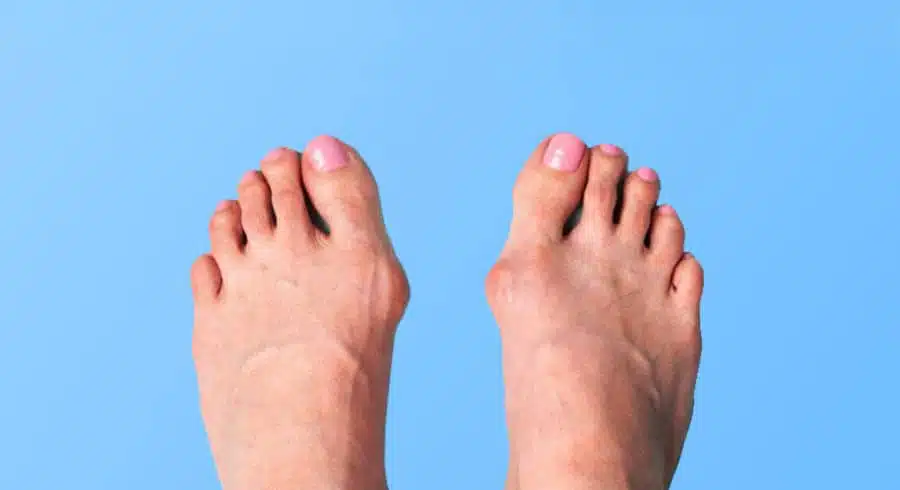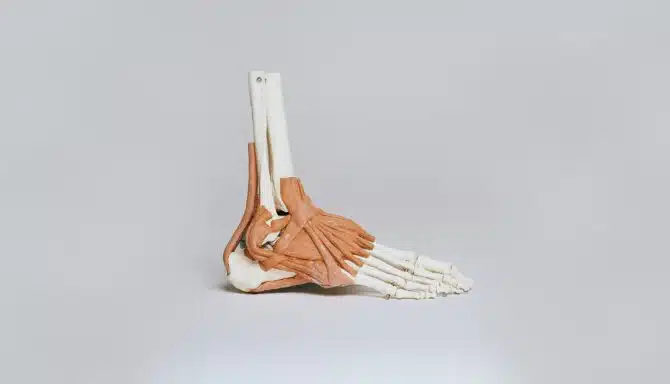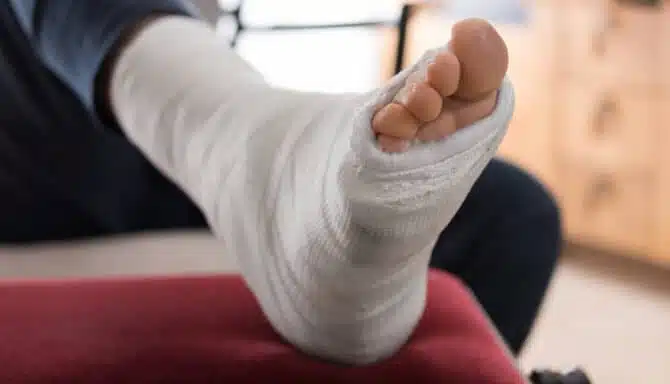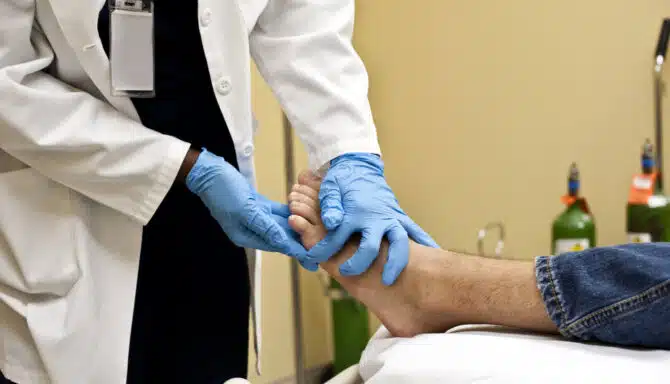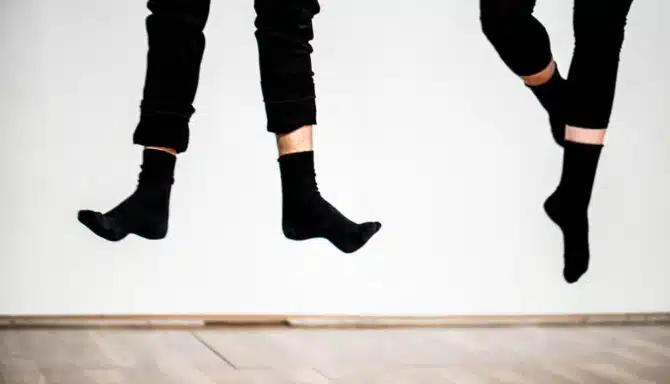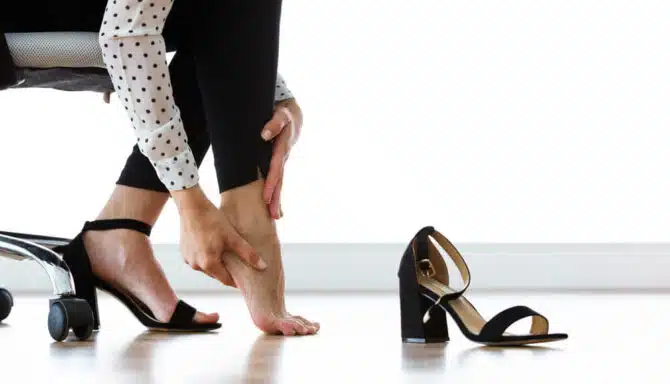Hallux Rigidus or Bunions? You may of heard of bunions but how about hallux rigidus? Both are foot issues that affect the big toe. Both can be painful. They can be mistaken for one another. Sometimes the treatments can be different. So how are they similar?
The 5 ways that Hallux Rigidus and Bunions are the same
- Both are caused by boney build-up
- Both can become sore over time
- Shoes won’t feel the same and in some cases, start to hurt
- Both will generate pressure build-up around the joint
- Pain can be transferred to other parts of the foot to compensate. Your body will even compensate and get your ankle., knee, hip or even your lower back involved
So what are these similar conditions, do you have one and how do we treat it?
So why should we care about a boney toe?
When you walk, you naturally walk from:
- Heel
- Outside of the foot
- All the way through the big toe

So your big toe, naturally, is big to propel you off when you walk. That is its main job. To do this it need to be flexible. It is thought that the big toe should have 60 – 65 degrees of movement within it passively. That means it should come back to you by that amount without you moving it with force. If it can’t get that movement, the body will compensate and start to figure out how to move through the joint. So sometimes it:
- Still goes through the big toe causing pain
- Transfers weight to the other toes, and those toes then get painful
- Rolls off the side of the big toe
- Unlocks joints to get the degrees it wants to. It will unlock joints in the foot and all the way up to the hip if it has to.
In some cases you get knee, hip and ankle pain just because the big toe is not getting movement. Certain parts of your feet will ache. Rubs, callus and corns will start to form. Arthritis can build up. Figuring out early if it is a hallux rigidus or bunion is much easier then later on in the progression.
What is Hallux Rigidus?
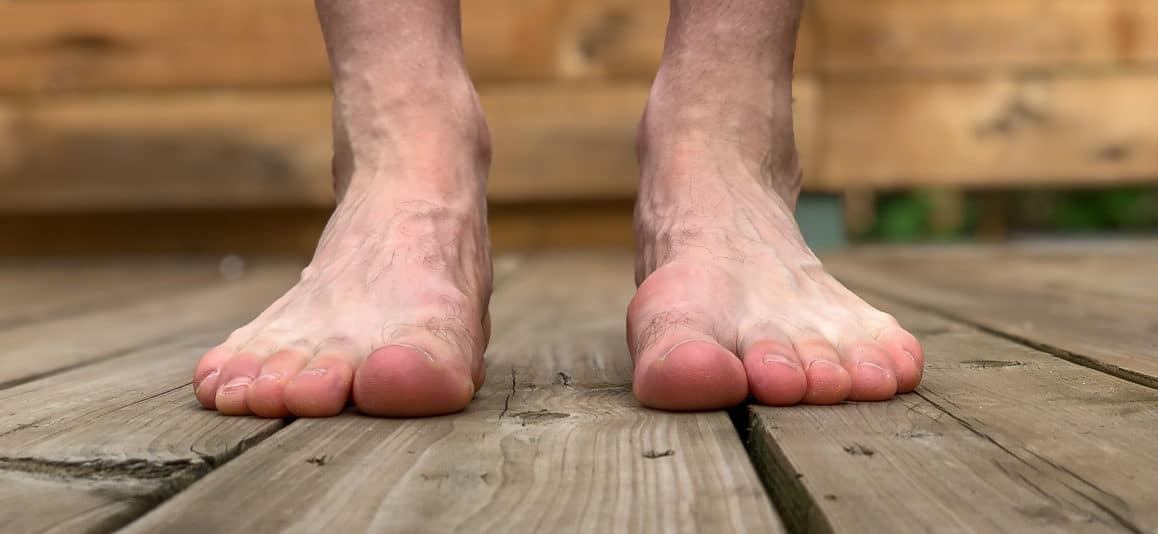
Overview
Hallux rigidus gets its name from hallux, or big toe, and rigidus, which translates to stiff (rigid). So it is a rigid big toe. There is very limited movement. In the picture above we see a boney lump on top of the big toe.
Hallux rigidus develops as a result of Osteoarthritis. As the first metatarsophalangeal (MTP) joint breaks down over time, often due to repetitive use, the body responds by creating bone growth as a defence mechanism. As the area becomes increasingly crowded with bony outgrowth, one loses flexibility in their big toe, and the condition worsens as the first long bone (metatarsal) in the forefoot begins to rub against the first bone of the big toe. The bony outgrowth is known as osteophyte. In other words, a bone spur.
The area at the base of the big toe (the first MTP joint) is particularly prone to Osteoarthritis and foot conditions because of the amount of weight the joint bears. As Harvard Medical School puts it, “every time you take a step, the MTP joint bends, allowing the foot to roll forward and push off. During this phase of the walking cycle, the joint supports 50% of the body’s weight.” Yes, 50%.
As the joint stiffens, your toes lose flexibility. This is called Hallux Limitus – limited movement in the big toe. With Hallux Limitus, we can see the movement in that toe joint starting to reduce. Walking, and any other form of weight-bearing exercise for that matter becomes increasingly difficult.
What are the causes of Hallux Rigidus?
This condition typically takes many years to develop. In its early stages, you may simply experience a tight big toe, or occasional pain when exercising. Hallux rigidus can also develop after trauma to the joint. For example, stubbing your toe repeatedly and not treating the injury will contribute to joint decay over time. In fact, many professional athletes experience some form of hallux rigidus, either as a direct result of turf toe or because of years of intensive activity.
NBA legend Shaquille O’Neal is one such example, though he suffered from bone spurs in his little toes. Ballet dancers, thanks for the fact that they are routinely on their tiptoes, are also particularly prone to hallux rigidus.
Finally, flat feet, hereditary defects and faulty foot mechanics can place additional stress on the joint, triggering arthritis.
Not all toe stiffness is the same. Minor joint stiffness is called hallux limitus. People with hallux limitus have more flexibility and range of motion than those with rigidus, and bone spurs may also be absent.
However, without the proper treatment, or ignoring it all together, the condition can quickly worsen. Unlike other injuries that you can acquire, hallux rigidus is a progressive, and permanent condition. It can also cause calluses to form in areas of higher pressure – usually the first metatarsal joint.
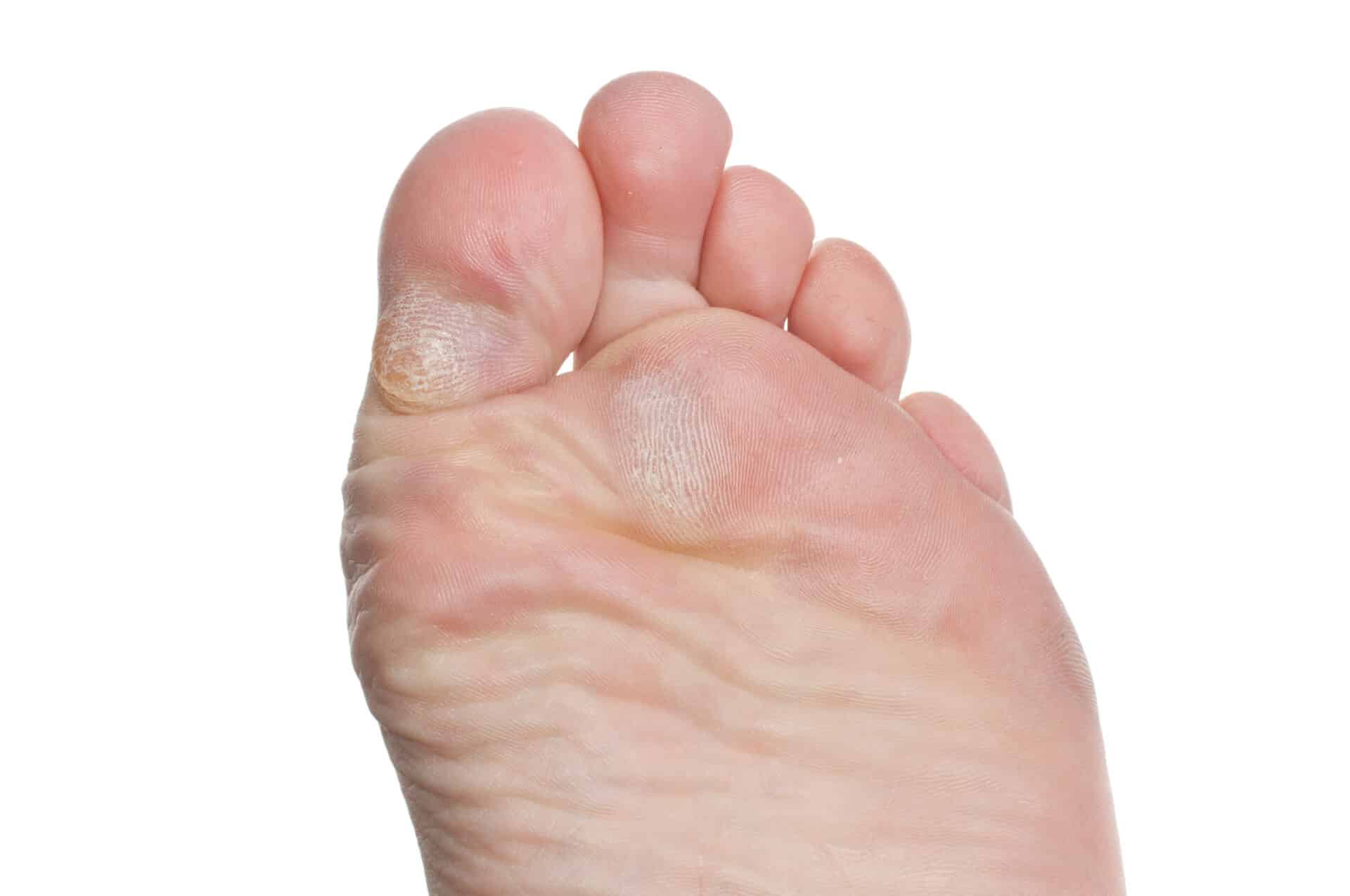
As you can see in the picture, a callus is building up on the second toe and the side of the big toe. There is no callus under the first toe. The body is figuring to put all the pressure upon the second toe then throw the rest of the weight through the side of the big toe.
What are the treatments for Hallux Rigidus?
Fortunately, those with hallux rigidus can offset the limits of their big toe in ways to enhance their daily lives. Here is a list of the most common treatments and recommendations for Hallux Rigidus and Limitus:
- Proper Orthotics and shoe modification: Usually the first aim is the reduce whatever is limiting the big toe’s movement. Orthotics can address if the cause is biomechanical. Orthotics can be altered to give extra movement within the joint, or offset pressure away from the joint so that it is not overburdened; this works well with Hallux Limitus. You can also get the sole of your shoe modified into a rocker sole.
- Proper footwear: Making sure that your shoes are deep enough to cater for the additional boney bump that will form on top of the big toe is helpful. It’s also important to wear shoes that are supportive and cushioned. If you’re doing a lot of walking, opt for running shoes, which offer more supportive features. You can also look for shoes with a rocker sole so that you “rock” through the big toe.
- Identifying family history: If your parents have feet issues then you may get them too. The biomechanical causes behind hallux limitus can be inherited, so check your parents’ feet; you can then try to prevent the issues from coming.
- Physical therapy, avoiding aggravating exercise, and strengthening the surrounding muscles that relieve pressure on the joint can all improve quality of life.
- More invasive options include surgery, including fusing the two bones, and a Cheilectomy, which is a surgical procedure to remove excess bone from the joint of your big toe. You can also get a joint replacement
You can read more about Bone Spurs here.
What is a Bunion?
Overview
Bunions, like hallux rigidus, affect the metatarsophalangeal (MTP) joint, which are the links between your foot and toes. It specifically affects the big toe (the first MTP joint).
To make things confusing, the condition is actually known as Hallux Valgus. (Another ‘hallux’ term.)
Bunions occur when the first metatarsal bone of the foot turns outward and the big toe points inward, according to Harvard Health. Unlike hallux rigidus, hallux valgus is the result of your bones shifting, with the resulting protrusion going outwards, and not upwards like with hallux rigidus’s osteophyte.
Unlike hallux rigidus, you are not walking straight through your toe; you are rolling off the side of the toe. Calluses can then form on the side of your toe in response to this now newly formed pressure.

There are Several Phases of bunions. To start, a small bump may appear on the outer edge of the foot. Over time, and if the bunion gets worse, the bump will grow, and the big toe will increasingly point inwards. Sometimes it can rotate and other times to big toe can go over or under the second or third toes.
What are the causes of bunions?
There doesn’t seem to be one singular main cause for Bunions; usually it’s a combination of things. Some common contributing risk factors for bunions include:
- Ill-fitting footwear: Footwear that is too narrow, accelerate a muscle imbalance, or cause faulty biomechanics can contribute to bunions. High heels also can too as they cause your body to put excessive weight on your big toe (bunions are 10 times more common in women than in men). However, shoes are not the only cause of Bunions. Research has found that in some villages where people were not wearing shoes, bunions still were present. So, there are other factors at play.
- Genetics: Many genetic factors can predispose you to conditions (i.e.: arthritis) or biomechanical issues that ultimately lead to bunions
- If you have a round or different metatarsal head
- Certain sports may accelerate the progression of bunions due to trauma, excessive force on the big toe, or the footwear worn.
- Foot type, foot shape and gait pattern
- Illness: As mentioned, there are some illnesses that seem to make a person more susceptible to bunions than others.
- There is some speculation that when a baby is in the womb, the position of its legs and feet might play a part.
How to Treat Bunions?
The good thing about bunions is that they are different for everyone. Some can progress really quickly and get larger within a year. Other people’s bunions hardly ever budge past a small bump. So we try to address the causes of bunions to help slow the progression, make you comfortable and allow you to do every day activity with little to no pain. Treatment for bunions has many components:
- Prevent bunion formation in the first place by reducing the risk factors that cause them. This goes from kids to adults.
- Shoe width is always forgotten. As the bone starts to protrude out, your footwear is not going to fit. Sometimes the width offered in commercial stores just are not wide enough. But specialized Chiropody clinics like our Toronto foot clinic carry wider shoes that other stores might not have
- Making sure that your footwear is supportive. If your foot is rolling through the side of the big toe, then support is needed. However the best way to support the foot and reduce pressure is Custom Foot Orthotics. Orthotics are especially helpful if your bunions are slow growing.
- Surgery is an option for some patients. There are over 100 different surgical technique that can be sued. Some just remove the bump on the side of the foot. Others remove the bump and realign the toe. Another option is fusions when you get total rigidity within the toe. It would be up to the surgeon to decide what would be the best option for you. However, regardless of surgical option, you would probably require Custom Foot Orthotics after the surgery to help prevent the bunion from coming back, as surgery doesn’t stop the underlying cause of the bunion formation.
- Toe separators can be very helpful for some patients. You can get custom or gel toe wedges. You an insert them between your second and first toe to keep them away from each other. They also can mildly reduce pressure against the toe, which sometimes eases the soreness.
- Bunion guards or shields help protect the bunion side from compression and rubbing if you can’t get new shoes to accommodate the bunion.
- Splints are helpful too. They cannot reverse the bunion, but they help reduce the pressure off the big toe joint and slow the progression.
- Foot Exercises can be helpful to reduce the pressure of some of the muscles and improve range of motion in the affected joints.
For additional treatment options, read our blog on Effective Ways of Treating Bunion Pain.
